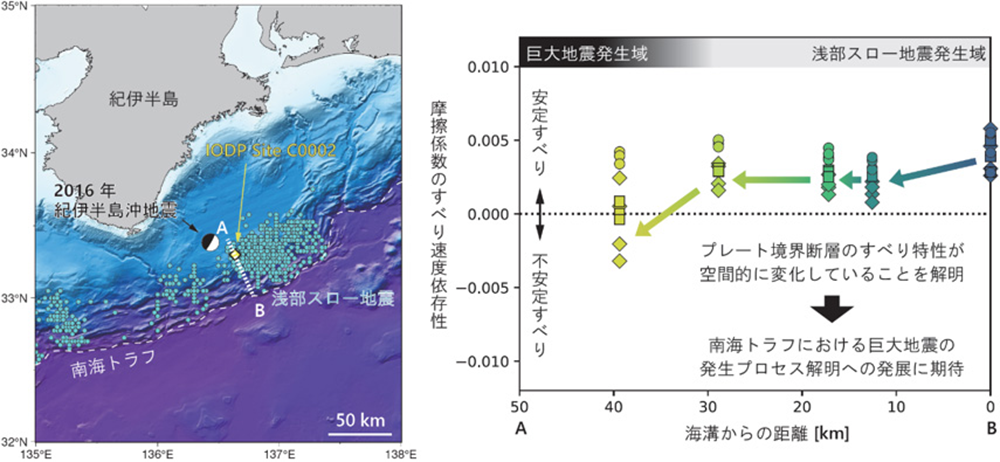Elucidating the Frictional Characteristics of the Plate Boundary Fault in the Nankai Trough through Friction Experiments-Contributing to revealing the mechanisms of Slow Earthquakes and Megathrust Earthquakes-
Summary of the AIST Press Release on September 21, 2023,
>>Japanese
The research group, comprising Hanaya Okuda (Researcher) at Kochi Institute for Core Sample Research, Japan Agency for Marine-Earth Science and Technology (at the time of research: Ph.D. student, Atmosphere and Ocean Research Institute, University of Tokyo), Manami Kitamura (Researcher) and Miki Takahashi (Research Group Leader) of the National Institute of Advanced Industrial Science and Technology, and Asuka Yamaguchi (Associate Professor) at Atmosphere and Ocean Research Institute, University of Tokyo, conducted experiments to investigate frictional characteristics of the plate boundary fault in the Nankai Trough off Kii Peninsula. A gas-medium high-pressure-high-temperature triaxial deformation apparatus owned by the Research Institute of Earthquake and Volcano Geology, National Institute of Advanced Industrial Science and Technology was used to simulate the temperature, pressure, and mineralogical conditions along the shallow plate boundary fault in the Nankai Trough. Results showed that changes in mineral species associated with subduction increased the friction coefficient of the plate boundary fault. In addition, presence of illite changed the velocity dependence of friction coefficient of the plate boundary fault from positive to negative with increased temperature, which increases the likelihood of earthquake occurrences along the plate boundary fault.
Recent developments in earthquake observation networks have shown that plate boundaries in subduction zones can generate not only megathrust earthquakes that cause tsunamis but also slow earthquakes without intense ground shaking. Since the slow earthquakes potentially trigger megathrust earthquakes, researchers have sought to clarify the mechanism and conditions of the slow earthquakes and their relationship with megathrust earthquakes. However, frictional characteristics of the plate boundary fault that trigger slow or megathrust earthquakes remained unclear.
The present study elucidated the spatial distribution of frictional parameters along the plate boundary fault from the shallow slow earthquake zone to the seismogenic zone in the Nankai Trough, the results of which were published in Okuda et al., Earth Planet. Sci. Lett, (2023). A comparison of the experimental results with seismological observations and numerical simulations will enable a more detailed study of wave propagation and tsunami generation processes associated with earthquakes in the Nankai Trough.
Fig. 1 Seismic activity and spatial distribution of frictional characteristics in the Nankai Trough


